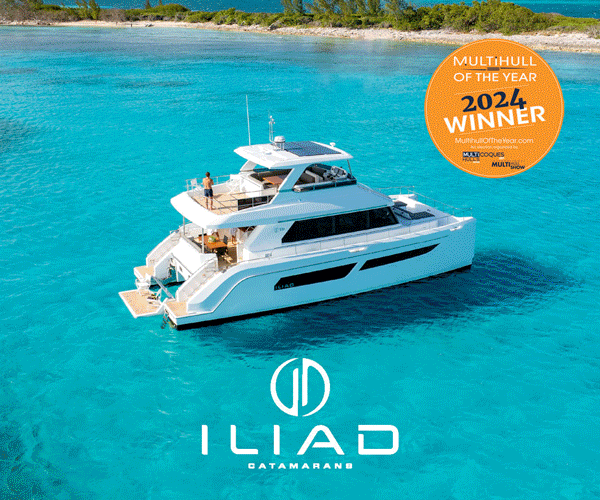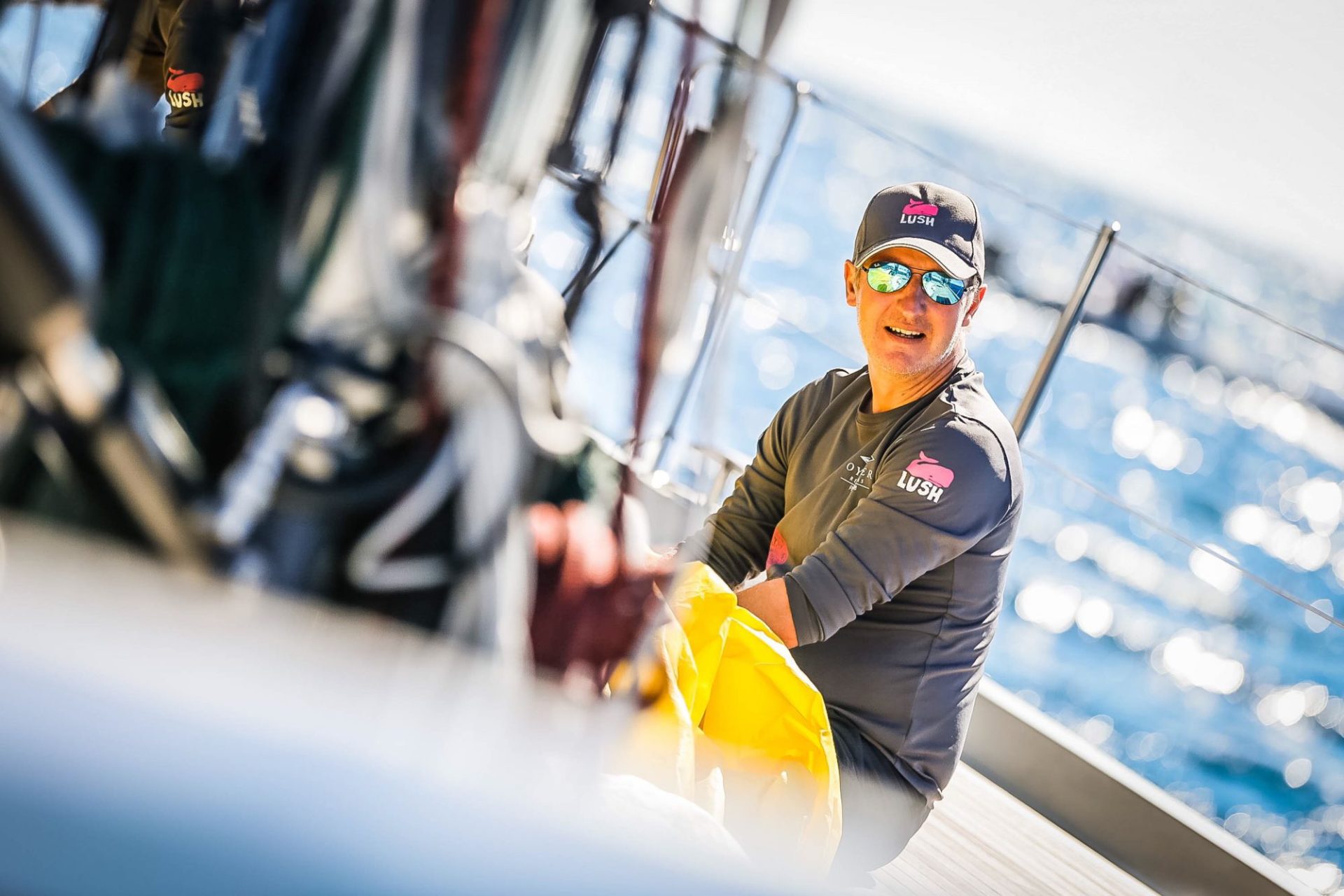Man of the minute
We talk business with Richard Hadida, the man who stepped up to the helm of Oyster Yachts in March, six weeks after the British yard went into administration.
06 December 2018
What’s it like coming into the business as CEO and owner, and also taking over at such a critical time for the company?
I originally approached Oyster as an owner, I enjoyed sailing and I think I know what owners want in a luxury cruiser. If you’d asked me in January would I ever own a boat business, I’d have said, “Are you mad?” It was completely spur of the moment. I believe – in fact I wholeheartedly am sure – that this company can be made profitable. In the last two years, for various reasons, it wasn’t, but it will be again.
I like to think I know what I’m doing when it comes to “What does an owner want?” I feel I can make sure that that is maintained in the DNA of all Oyster yachts going forwards. Because I’m not a boat builder it’s important to build a team around me that know what they’re doing. When it comes to people around me that are selling the boats and doing the marketing and the financial side of it, I’ve got an amazing C-level team.
When I bought the business, everyone had been made redundant except for 11 people. Everyone, the guys on the front line and at the yards as well. Over 200 employees are now back.
Since Oyster’s ‘holiday’ as we’re now referring to it, what we’ve done in the last six months is actually quite a good list. We have expectations and we’re really working hard in every area.
How hard has it been getting the right skills mix at your two yards?
That hasn’t been a problem. We’ve been pretty good about getting into the right training schemes and apprenticeships and in training people up. That is what’s really special about Wroxham [the yard in Norfolk county]: you have a grandfather, a father and a son all building the same boat and passing their knowledge down. You’ve got guys who have been 35 years in the same shed, bringing all their skill and that craftsmanship into what they do. That’s where the business started, and it’s been there 43 years. The other yard is in Southampton, on the south coast.
What changes can we expect now you have the reins?
We’re going to work on the delivery times. This time last year, Eddie Jordan and I said to previous Oyster management: “Look, we want a 118, how soon can we get one?” And they said, “We can squeeze you in for a delivery in… October… 2021.” Eddie promptly responded with, “We could well be dead by then!”
We have to be able to produce these boats more quickly. If someone is willing to spend between 5 or 10 million pounds on a yacht, they want to see it within a year. So I want to focus on building these boats with the quality they already have, just quicker.
How do you achieve that and speed up production?
There are lots of ways. When it comes to the moulding of the hulls, Oyster used to buy them from a company that would make and deliver the hulls on its own time frame. They went out of business as well, so I’ve had to fix that up and put in state-of-the-art equipment. We will start producing these hulls more rapidly so we’ll have them ready to go.
It’s all in-house in the UK, which means we’ve got full control of the process. When you buy your Oyster, there it is, a hull ready for you.
The other thing you can do is you can run two shifts. So right now, in a 24-hour day at the factories, there are only men and women on the boat for eight hours a day. If you increase that to 16 hours a day, you’re obviously going to build more. Now to do that you’re going to need to be very organised, you need to really know what you’re doing and this requires proper work packages and stuff like that, which they had never had!
If you build boats at exactly the same speed, you will not make a penny. Sell them for the right price, sell more of them and build them quicker: job done.
What’s your approach to quality control?
We are focusing on building them faster without sacrificing quality. Lloyd’s Register are in now certifying the hulls, because that can never happen again – we might as well talk about the elephant in the room – the Polina Star III incident. Thank god no-one died and on my watch nothing like that will happen. Lloyd’s surveyors are on site every week, they monitor the design and build of the hulls and put their stamp on them. We haven’t made any mistakes, which is what basically happened on Polina Star III. And then we have to rebuild the brand. Although, interestingly, the brand is so strong, and the owners are so in love with their boats. Our Oyster owners wouldn’t dream about going anywhere else. The letters of love I’ve had from them, saying “Thank you Richard…” I feel that I’m the right person to have bought the company. Of course, time will tell.
What’s the plan with your range of offerings?
We build two superyachts, and we’re certainly continuing with those; the 885 and the 1225. We’re working with Pendennis to build the first 1225 with our people over there; it’s our designers. It will have the Oyster logo on it and will say something like “Lovingly built by Pendennis for Oyster Yachts.” Whether that’s long term or not is still to be discussed. Two of the slightly older G5 range, the 575 and the 625, are very popular. We keep trying to phase them out but people keep ordering them. So you can’t say no!
There has been a rumour that you were stopping the bigger builds.
100 percent never said that, no. We have two in build. The first one is due for completion early next year, and I’ve bought the hull for the other one because the guy didn’t want to continue for personal reasons. When the first one launches and goes to Cannes next year, people will see it and they’re going to say, “My god, that is the best sail-based superyacht in the world.” So yes, we will sell those boats. Our range is 56 foot to 122-and-a-half foot.
What about the hearsay that you’ll be going smaller?
That is in fact true. We are evaluating. 56 foot is our entry level and it’s £1.4 million, which is a lot of money. 40 percent of Oysters are actually sold to Oyster owners, so if you can get into the family a bit earlier in life then you’ll probably stay in. That’s the basis of it, but it still needs to tick all the boxes: it needs to be bluewater, it needs to go anywhere in the world and it has to be luxury.
How about the faster carbon fibre racing models announced late last year, are they going ahead?
I think you’re referring to the plans to build a 100-footer. They were just concepts. They are in the bin. We have gone back to our roots as the finest bluewater cruising yachts available. Old Oyster had some great ideas of becoming a Swan, I think, so they made the regattas more and more competitive and race-focused. Swan do carbon super speed, but we are about super luxury cruising. Don’t get me wrong, as we progress, each hull is faster. But they’re not out-and-out racing boats.
I’m pretty clear about what Oyster represents. I’m putting kids back in the picture, it’s more about family and it’s less aggressive. I think his vision and my vision are totally apart. If you spend your life inventing new boats and then constantly changing them, you might get a couple of extra sales, but I want to build a long-term business that’s sustainable, and the bottom line is whatever they were doing wasn’t sustainable.
Is the family focus inspired by your Oyster experience?
Yes, totally. It’s what Oyster is all about. I had the best time of my life on my boat with my kids, diving into the sea and into shark pools and having adventures. It’s not about thoroughbred race boats and all that stuff. There’s plenty of guys out there who are very good at that, and they can have that market.
What’s your promotional strategy?
I believe that out of every 20 boats that are sold 19 of them are motor boats, so only one in 20 is a sail boat. We can get that up to two in 20 by, I believe, promoting sailing generally, not just Oyster.
Younger people are more aware of the environment than older people. Our generation is responsible for some really terrible things in the world. And the younger generation says, “No Daddy, I want clean oceans, not ones full of plastic.” It’s our planet and we need to look after it. So hopefully more younger people will move to sailing.
You realise you have more fun on sail boats. Sail boats come out to play when all the power boats hide in the harbour. You can quote me on that! It’s true.
In Australia and New Zealand, the Oyster brand is well known, and we’ve got a lot of events coming up with the America’s Cup. The area is going to be buzzing with owners that venture out to the Pacific for a month or two. What are you doing to promote Oyster there?
That’s something that we’re looking at in terms of how we spread our wings. We took the Oyster World Rally into New Zealand this time but I think it would be amazing to actually take the next fleet over into Sydney and bring the whole rally under the bridge.
When people see them and they start to experience the events, the support and the service, they’ll realise how special those things are. Wouldn’t it be brilliant to turn up with 35 Oysters? For us, it’s a mini boat show of really happy Oyster owners doing what they do best, which is exploring all these beautiful locations.
So what is Oyster’s next new boat in the water?
The 565. She’ll launch in February. The 1225 launches later next year and she will be our sales ambassador. When she comes into Sydney we will be inviting the great and the good of Australia on board for a tipple of Mount Gay. You should come along!









